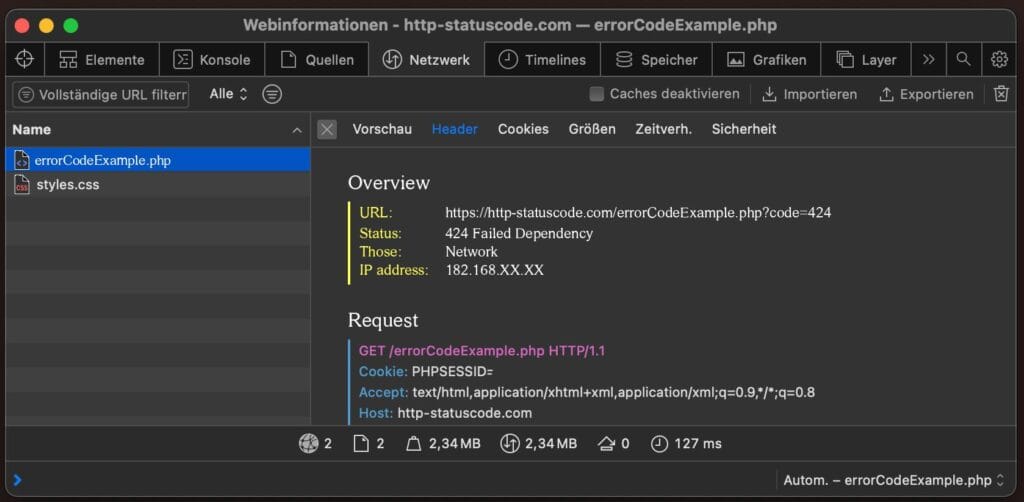
Sometimes you're in a chain of operations where everything leans on each other. Consider an API request that is not allowed to proceed until another action succeeds. And then suddenly you get this back: 424 Failed Dependency.
With this, the server actually says: I could not execute this request because something else, on which this depended, did not work. So not your fault, not necessarily something broken, but an obvious blockage in the chain.
Where does the 424 status code come from?
Originally, this status code is part of WebDAV, a protocol that allows you to perform multiple operations on files simultaneously. For example: create a folder, add a file, set permissions. If step one fails, step two makes no sense. That idea is exactly what the 424 is supposed to convey.
Meanwhile, you also see the 424 status code in APIs that work with transactions, dependencies or batch requests. One action fails, so the next one is automatically skipped. Especially for websites or applications that use APIs intensively (such as web shops), specialized WooCommerce Hosting or scalable Cloud Hosting often the solution.
A real life example
Suppose you send a POST to create a user, followed by a PATCH to change something about that user directly. If the creation fails (for example, because the email address already exists), that PATCH fails, and so you get a 424 in return.
Not because your PATCH was incorrect, but because the condition (that user must exist) was not met.
How do you solve this?

You don't fix this kind of mistake by tinkering with the second request. You have to go back to the step that preceded it. Where did it go wrong? What condition was not met? Was the resource created at all? Or did a dependent script, trigger or transaction not work as expected?
The error message itself usually doesn't reveal everything. You'll have to dig: logs, debug output, response codes from previous steps.
If you work in a microservice environment or an architecture with queues, then you may also encounter this status code internally. In that case, it is often a consequence of a dependency failure at the system level.
In a nutshell
The 424 status code is a signal that your request was good in itself, but impossible to execute because an earlier step failed.
It's not a syntax problem, not an authorization error, nor is it a server crash. It is a dependency error. Therefore, the solution usually lies not in the current request, but in the path that preceded it. Once you find and fix that cause, the 424 will disappear on its own.